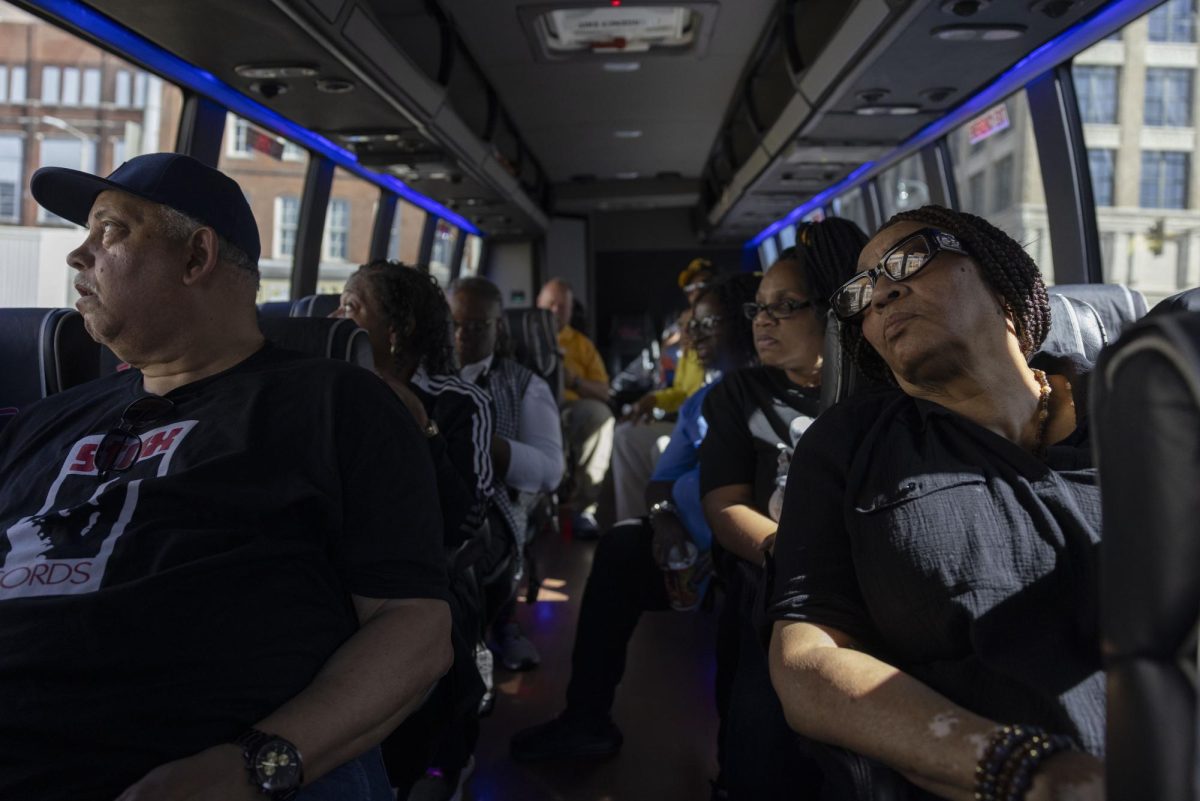University funding looms as pressure point in Illinois budget standoff
November 2, 2015
For Illinois’ universities nearing the end of the fall semester without money from the state, it’s a tale of the haves and have-nots.
Larger schools with vast alumni networks and healthy foundations such as the University of Illinois and Illinois State University have been able to weather the budget battle between Republican Gov. Bruce Rauner and Democrats who control the legislature with minimal disruption. Positions go unfilled, technology isn’t upgraded and construction projects are pushed back.
At smaller schools where enrollment has declined in recent years or fundraising is more difficult, the pain has been more pronounced. There have been layoffs and furloughs. Money for athletics has been cut. Degree programs face consolidation. And cash reserves have been raided. Of particular concern is whether schools can continue to absorb the cost of scholarships for low-income students that the state usually covers.
Advertisement
At Eastern Illinois University in Charleston, President David Glassman recently told lawmakers that without a cash infusion from the state, the school may have to shut down during the spring semester. The pressure also is on at Northern Illinois University in DeKalb, where Chief Financial Officer Alan Phillips says it will be “very difficult” to make it through a full year without state money.
Already, six universities had their bond rating downgraded last week by Moody’s Investors Service because of the state stalemate. Lowered by two notches were EIU, Governors State and Western Illinois; NIU, Northeastern Illinois and Southern Illinois were lowered by one. Ratings for the U. of I. and ISU were not changed, but Moody’s gave them a negative outlook, meaning they could be dropped because of the delay in state funding. Lower credit ratings mean it will cost universities more if they decide to borrow money during the impasse.
Given that thousands of Illinois parents have children at state universities, some of the more optimistic lawmakers at the Capitol are hoping the situation will prove to be a new pressure point to get a fix done by year’s end. The closure of college campuses this spring could send shock waves through higher education in Illinois for years to come.
“In large part, this has been a theoretical budget crisis,” said Sen. Bill Cunningham, D-Chicago, who sits on the Senate Higher Education Committee. “There are definitely people feeling pain, moms can’t get child care, social service groups are laying people off. But if this extends to universities and community colleges, and classes start getting canceled and students are told their financial aid money is no longer there, the problem gets a lot less theoretical and a lot more real. It’s my hope that kind of pressure forces a deal. A crisis is something we need to force action.”
But in a delicate balancing act, many schools have been doing their best to present the situation not as a crisis but rather a bump in the usually bumpy road of Illinois budgeting. The reason is one of practicality: Now is when schools are recruiting new students. Broadcasting the possibility that classes might stop and programs are being cut hardly inspires confidence in students and parents to sign up for the fall 2016 semester.
“At some point in time we believe there will be a budget, and hopefully we can get through 2016,” said Phillips, the CFO and vice president of administration and finance at NIU. “Until then, we plan to continue our operations and our recruiting, but the problem is you get to a point where you indicate you might not be in operation or make it until the end of [next] September, and then the problem is that you aren’t going to get any students. And once you lose your students, they won’t be coming back.”
With most areas of state spending dictated by court order or laws prioritizing debt and pension payments, so far there’s little incentive for either Rauner or Democrats to cave. Indeed, both sides continue the blame game.
Advertisement*
Rauner points the finger at Democrats who won’t go along with his pro-business, union-weakening agenda, saying they are standing in the way of a budget agreement. He has called the possibility that colleges may close “outrageous.” But speaking generally about the impasse, the governor said he’s not willing to give up on his legislative wish list because he is trying to bring about permanent change that he argues will put the state’s economy on a stronger footing.
“We’re going through some change, change is difficult, change causes pain,” Rauner said after a recent breakfast stop at a Springfield diner. “We believe very strongly that we’re going to go through some short-term pain for some very long-term gain.”
Democrats contend the budget shouldn’t be used as a political football, saying what Rauner views as short-term pain could lead to irreversible damage.
“There are two competing views on how to make Illinois strong again,” said Sen. Pat McGuire, a Joliet Democrat and chairman of the Senate higher education panel, which has held hearings across the state on how the lack of a budget will impact schools.
“The governor’s view is to kill unions. The other view is to invest in its people, in this case, men and women who want to do more in their lives and for the state by getting certificates and degrees,” McGuire said.
Universities and colleges have been running without state assistance since July 1 after Rauner vetoed the majority of the out-of-whack budget Democratic lawmakers sent him. While Rauner did free up money for elementary and high schools, his veto struck down the roughly $1.9 billion in operating funding legislators had set aside for higher education.
Rauner’s budget moves were designed to prevent a major public relations problem by keeping grade schools open while at the same time cranking up the pressure on Democrats to cave in to keep money flowing in other areas. That hasn’t happened so far, and there has yet to be a fix for higher education.
If it wasn’t already difficult enough for schools to stay open without operating money, they also didn’t get $373 million to pay for scholarship grants for low-income students known as the Monetary Award Program. Another roughly $4.5 million for special scholarships for dependents of police and firefighters killed in the line of duty as well as minority teachers and Golden Apple scholars also did not go out the door.
As many as 130,000 students were set to receive MAP grants this year, with an average award of $2,700. Because those who rely on the awards come from households with incomes ranging from $16,000 to $30,000 a year, advocates say the scholarship money is often a determining factor in whether someone can afford school.
Rather than turn away low-income students, universities decided to eat the upfront cost with the hope that a budget would be put in place and they would be reimbursed. While some schools like the U. of I. and ISU are able to absorb the cost for both the fall and spring semesters, others like NIU say they can’t guarantee they will be able to cover the scholarship money again come spring.
At Southern Illinois University in Carbondale, administrators have not yet decided whether students will be billed retroactively for scholarships the school floated during the fall, or if the school will be able to front the costs again this spring.
That could leave some students scrambling.
“They’ll have to make a real decision,” said Lynne Baker, spokeswoman for the Illinois Student Assistance Commission, which oversees the scholarship programs. “Can I find alternative funding? If I am maxed out on my loans, do I drop a class? Do I not go this semester? It really could potentially have a very significant impact on students.”
The Senate passed a bill that would fund the scholarships, but it has stalled in the House as Democrats have had trouble gathering the 71 votes needed to pass the measure. Rauner is opposed, saying piecemeal budgeting has put the state on track to spend billions more than it’s taking in.
Indeed, the patchwork of court orders and laws keeping government chugging along during the stalemate is based on last year’s spending levels, when a higher income tax rate meant the state was bringing in more dollars.
That means that even if a budget deal is reached, there are still likely to be deep cuts across state government. Rauner’s own budget proposed slashing higher education by 31 percent, a scenario administrators are bracing for. Democrats also targeted higher education funding in their budget — the $1.9 billion is 6.5 percent less than last year.
Universities already have made their own cuts. At SIU, officials say they’ve saved $13.5 million by leaving vacant positions unfilled. At EIU, dozens of layoffs and worker furloughs saved $12 million, and another $320,000 was cut from intercollegiate athletics. The school also began charging fees on credit card transactions used for tuition payments to bring in money.
The U. of I. closed an advancement office in San Francisco, and plans to open new offices in China and India have been put on hold. The state’s flagship university also has delayed plans to upgrade its information technology system.
School officials note that even if the money spigot is turned back on, it will take weeks or months for the state to process back payments. That’s left some pushing for a plan that would let universities borrow money to make ends meet in the meantime. The idea would have to be approved by lawmakers and Rauner, and it could be a tough sell, particularly among Republicans who argue that the state’s penchant for borrowing helped fuel its massive deficit.
“It’s frustrating to see the only folks who are being funded are due to court orders, but we really don’t want to do our business that way,” said ISU President Larry Dietz. “It’s very difficult to run any of the universities for essentially a third of the year not knowing what your budget is going to be. We often hear, ‘Why don’t you run the university like a business?’ Well, I don’t know any business that doesn’t know what its revenue stream will be. We’re trying to hold students harmless as long as we can, but they deserve to know what the potential long-term effects are.”
Dietz said the state’s failure to fund higher education will reverberate for a long time, noting that Illinois trails only New Jersey in the number of high school students who choose to go to college outside of their home state. Add to the mix that universities are often the economic engines of their region, and the closure of a university could be catastrophic for the local economy, even if it’s just temporary.
University leaders have stepped up lobbying efforts. Presidents descended on the Capitol last month to meet with top lawmakers. Meanwhile, officials are appealing to alumni to raise the pressure while at the same time promising their alma maters won’t wither away.
“University resources are being stretched thinner and thinner, nonetheless I want to assure you that SIU will be open and will stay open for the spring semester,” SIU President Randy Dunn said in a video message sent to thousands of alumni. “I make that commitment to you. In return, however, I must ask each of you to join our efforts to encourage the governor and the General Assembly to find a resolution to this budget crisis.”
(c)2015 the Chicago Tribune
Visit the Chicago Tribune at www.chicagotribune.com
Distributed by Tribune Content Agency, LLC.
Advertisement








